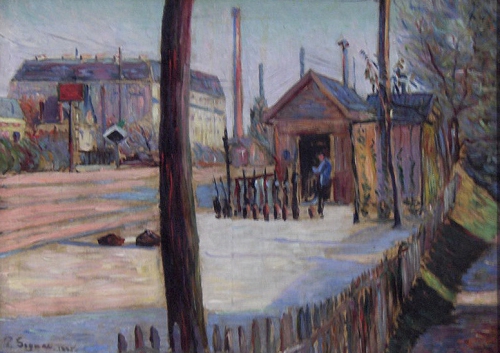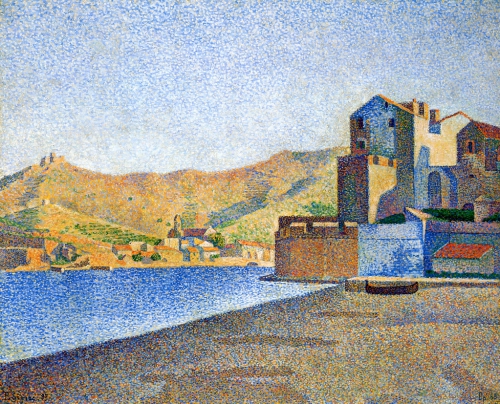Paul Signac | XIX-XXe | Paul Signac (170 works)
French post-impressionist artist, representative of the pointillism movement. Paul Signac was born on November 11, 1863 in Paris into a wealthy family of a store owner. He did not receive a systematic art education; worked mainly in Paris. In the early period of his work, Signac was close to impressionism ("Two Milliners", 1885, private collection, Zurich), from 1886, under the influence of Georges Seurat, he joined the neo-impressionism movement, painted landscape views of the south of France, calm in composition, maintained in a restrained, balanced palette (“Sandy Seashore”, 1890, State Museum of Fine Arts, Moscow; “Papal Castle in Avignon”, 1890, National Museum of Modern Art, Paris). Influenced by the work of Georges Seurat, he enthusiastically studies the scientific works of E. Chevreuil, G.L.F. Helmholtz and others, devoted to the patterns of relationships between light and color. Having verified in practice that the sound of color is enhanced if the colors are not mixed on the palette, but applied to the canvas in small strokes, Paul Signac begins to paint with separate dots of pure color and becomes an active promoter and theorist of a new artistic method - divisionism, or pointillism. The main place among Paul Signac's landscape works is occupied by marinas depicting the Mediterranean coast of France. In 1887, Signac visited the small southern town of Collioure and painted there a series of works in a new pictorial style, marked by the strong influence of Georges Seurat ("Port Collioure", 1887, Kreller-Müller State Museum, Otterlo; "View of Collioure", 1887, private collection , NY). In them, the artist subtly and surprisingly faithfully conveys all the features of Mediterranean lighting, using a bizarre mosaic of small strokes of blue, violet, green, yellow and red. While generally accepting the style of Georges Seurat, Paul Signac nevertheless adapts it to his vision of the world, abandoning the cosmic perception of the surrounding nature. Paul Signac always stands on the ground and perceives everything that happens from here, therefore the nature on his canvases is more ordinary, and therefore closer and more familiar (“Lines and Sails”, 1896, private collection; “Sandy Seashore”, 1890, Pushkin Museum, Moscow; "Boats in the Sun", 1891, private collection; "Red Buoy", 1895, Orsay Museum, Paris; "Saint-Tropez", 1897, Annonciade Museum, Saint-Tropez; "Port of Rotterdam", 1907, Museum Boijmans van Beuningen , Rotterdam; "Port of Marseille", 1907, Hermitage, St. Petersburg; "Pine in Saint-Tropez", 1909, Pushkin Museum, Moscow). Paul Signac preferred working in the studio to working outdoors, believing that the technique of oil painting was not suitable for plein air, so watercolors made on location were more temperamental and livelier than his paintings.




















































